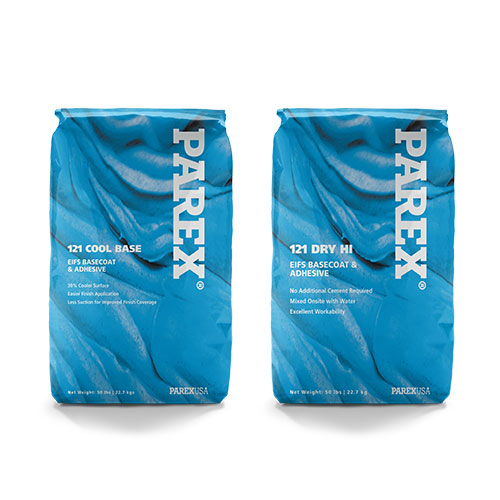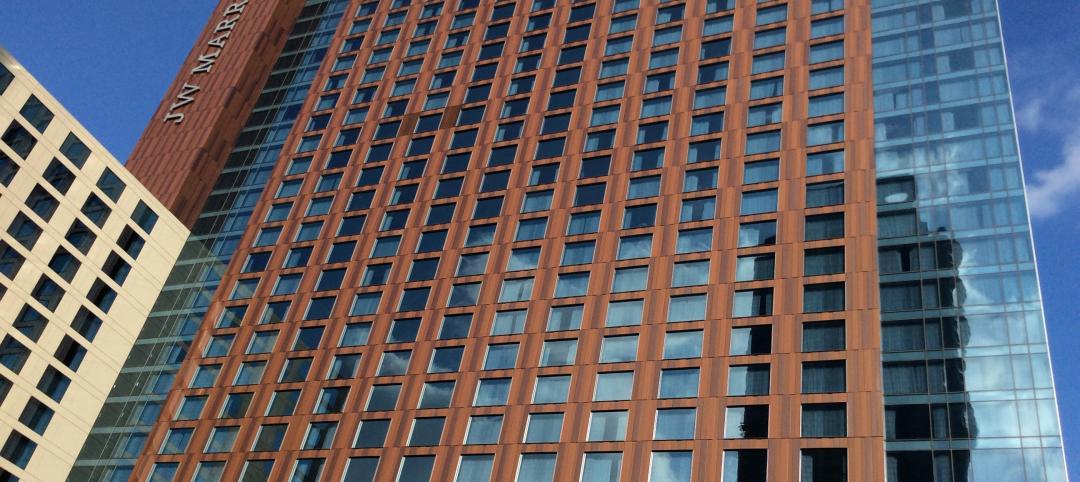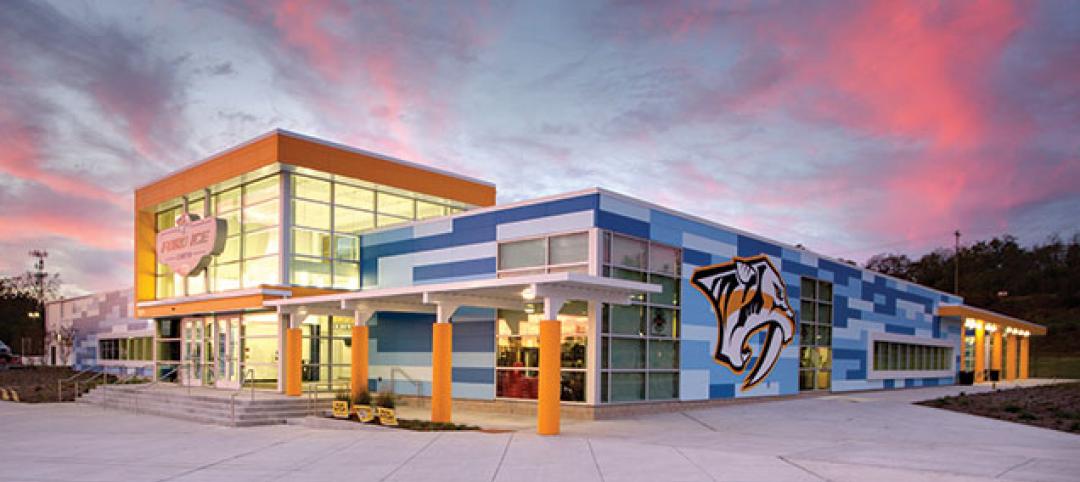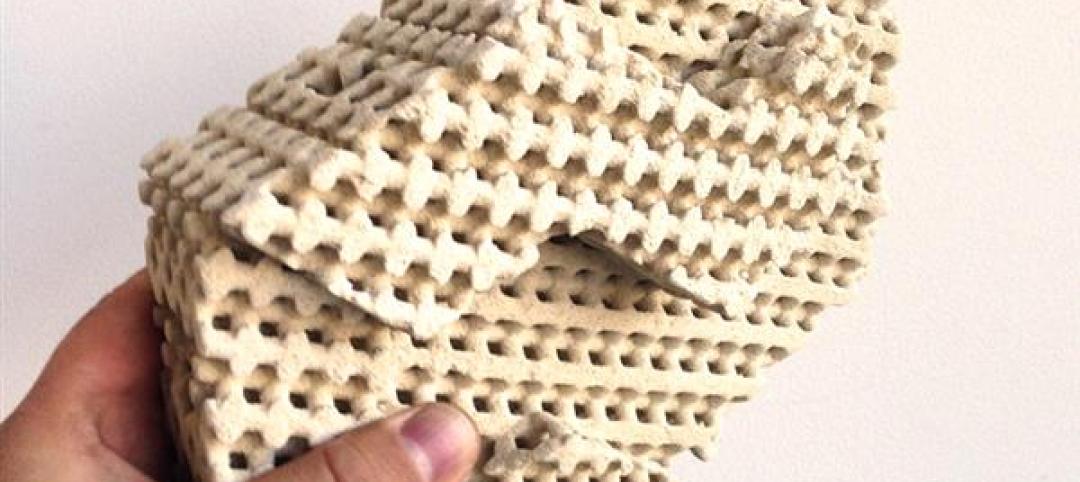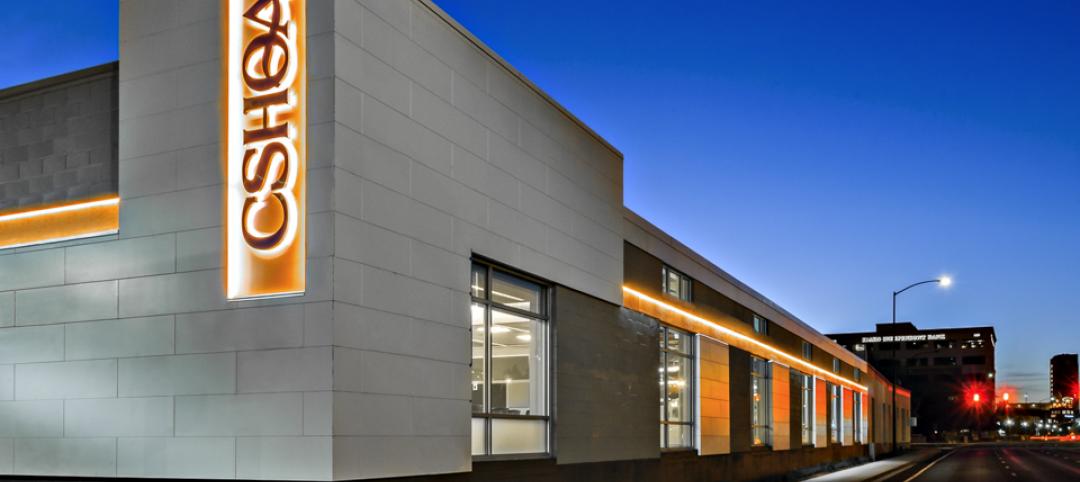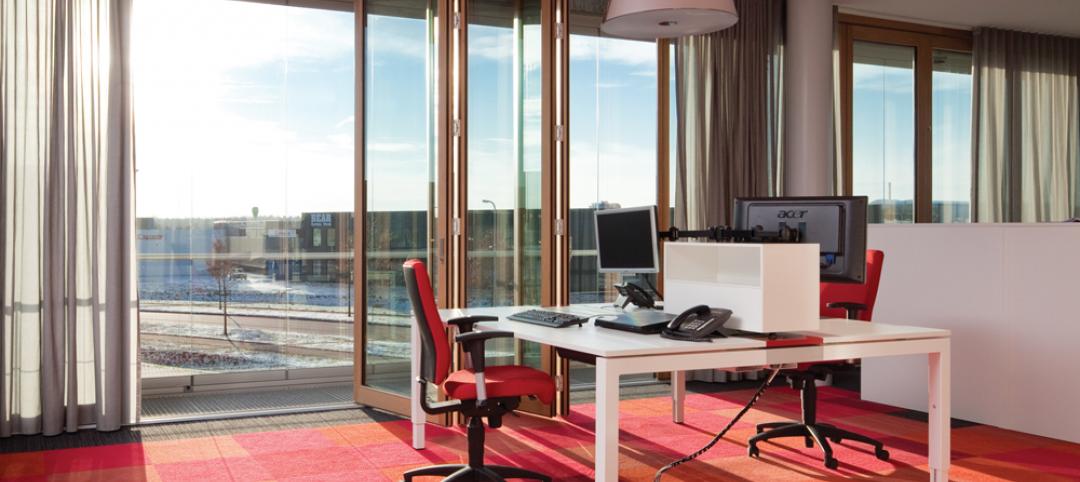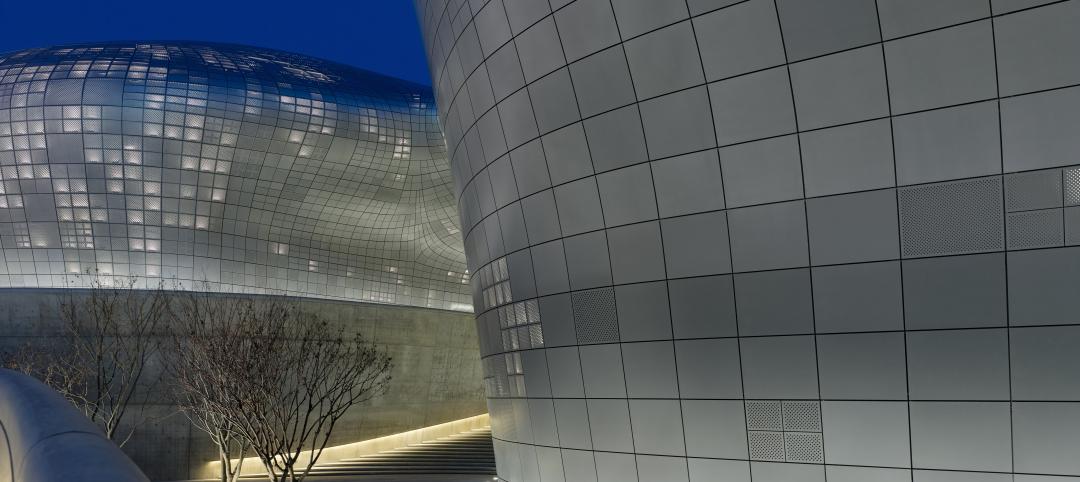Parex USA, Inc., the parent company of leading building material brands; Parex, Teifs, LaHabra, El Rey, and Merkrete, unveils two new Parex EIFS basecoats & adhesives – 121 Cool Base and 121 Dry HI (High Impact). Designed with the contractor in mind, the two new products boast extreme coolness and unsurpassed strength.
121 Cool Base is a premium, white EIFS basecoat and adhesive that is incomparable in the industry. It produces a 30 percent cooler basecoat temperature than typical basecoats & adhesives, which results in less suction and hydration when a final finish is applied. This technology allows for improved finish coverage as well as a faster and easier finish application.
“With the potential of improved finish coverage and ease of finish application, Parex’s new 121 Cool Base is set to make a big impact in the market,” said Heidi Larsen, Parex USA Product Manager. “When we presented a sneak peak of this product to contractors during our annual meeting, it was received with enthusiasm and overwhelming interest. Everyone was amazed at the drastic temperature differences between 121 Cool Base and standard EIFS basecoats & adhesives.”
Parex also introduces 121 Dry HI – a high performance EIFS basecoat and adhesive that is fortified with a unique blend of raw materials for increased impact and puncture resistance. It yields up to 30 percent better impact resistance (compared to standard EIFS basecoats & adhesives). 121 Dry HI is formulated for enhanced workability and provides easier application. This product is ideal for ground floors and other areas where greater impact resistance is required.
“In addition to providing 30 percent more impact resistance, 121 Dry HI also helps achieve higher ASTM/EIMA impact classifications,” said Larsen. “Typically, to achieve a “High” impact classification, a High Impact mesh (15 oz.) plus an additional layer of Standard Mesh (4.5 oz.) is required. Now, you can achieve a “High” impact classification utilizing a single layer of Intermediate Mesh (12 oz.) embedded in 121 Dry HI.” This system greatly reduces material and labor costs.
121 Cool Base and 121 Dry HI are one-component, polymer-modified, cement based dry products that are used as an adhesive to adhere EPS boards to existing substrates, a basecoat to embed reinforcing mesh and a leveler in Parex EIF Systems. Both 121 Cool Base and 121 Dry HI are shipped in 50 pound bags. Coverage, mixing instructions and limitations can be found in the Product Data Sheet at www.parex.com.
Related Stories
Sponsored | Coatings | Apr 20, 2015
Valspar delivers custom coating solution for JW Marriott Austin
Stunning design by HKS leaves onlookers wondering—weathered steel or coating?
Sponsored | Cladding and Facade Systems | Mar 24, 2015
Designers turn a struggling mall into a hub of learning and recreation
Architects help Nashville government transform a struggling mall into a new community space.
Brick and Masonry | Feb 5, 2015
3D-printed 'cool brick' may provide cooling solution for arid locations
Cool Brick is made of porous ceramic bricks set in mortar. The bricks absorb water, which cools the air as it passes through the unit.
| Dec 28, 2014
Robots, drones, and printed buildings: The promise of automated construction
Building Teams across the globe are employing advanced robotics to simplify what is inherently a complex, messy process—construction.
Sponsored | | Sep 25, 2014
Architects transform warehouse into office space while preserving its historic nature
When it came time for CSHQA, an award-winning, full-service architecture and engineering firm, to move office locations, they didn’t need to look far. The 20,000-square-foot warehouse was not only a mere three blocks away, its renovation would be an ideal demonstration piece to show existing and potential clients.
| Sep 7, 2014
Building the cladding palette: panels, rainscreens, and veneers [AIA course]
When it comes to cost, performance, and aesthetics—not to mention maintenance and long-term resilience—the evaluation of cladding materials and façade systems is more complex than ever. This course is worth 1.0 AIA CES HSW learning units.
| Jul 1, 2014
Sochi's 'kinetic façade' may steal the show at the Winter Olympics
The temporary pavilion for Russian telecom operator MegaFon will be wrapped with a massive digital "pin screen" that will morph into the shape of any face.
| May 27, 2014
Fire Rated Glass contributes to open lab environment at JSNN
Openness and transparency were high priorities in the design of the Joint School of Nanoscience & Nanoengineering within the Gateway University Research Park in Greensboro, N.C. Because the facility’s nanobioelectronics clean room houses potentially explosive materials, it needed to be able to contain flames, heat, and smoke in the event of a fire. SPONSORED CONTENT
| Mar 26, 2014
Zaha Hadid's glimmering 'cultural hub of Seoul' opens with fashion, flair [slideshow]
The new space, the Dongdaemun Design Plaza, is a blend of park and cultural spaces meant for the public to enjoy.
| Mar 20, 2014
Common EIFS failures, and how to prevent them
Poor workmanship, impact damage, building movement, and incompatible or unsound substrate are among the major culprits of EIFS problems.


